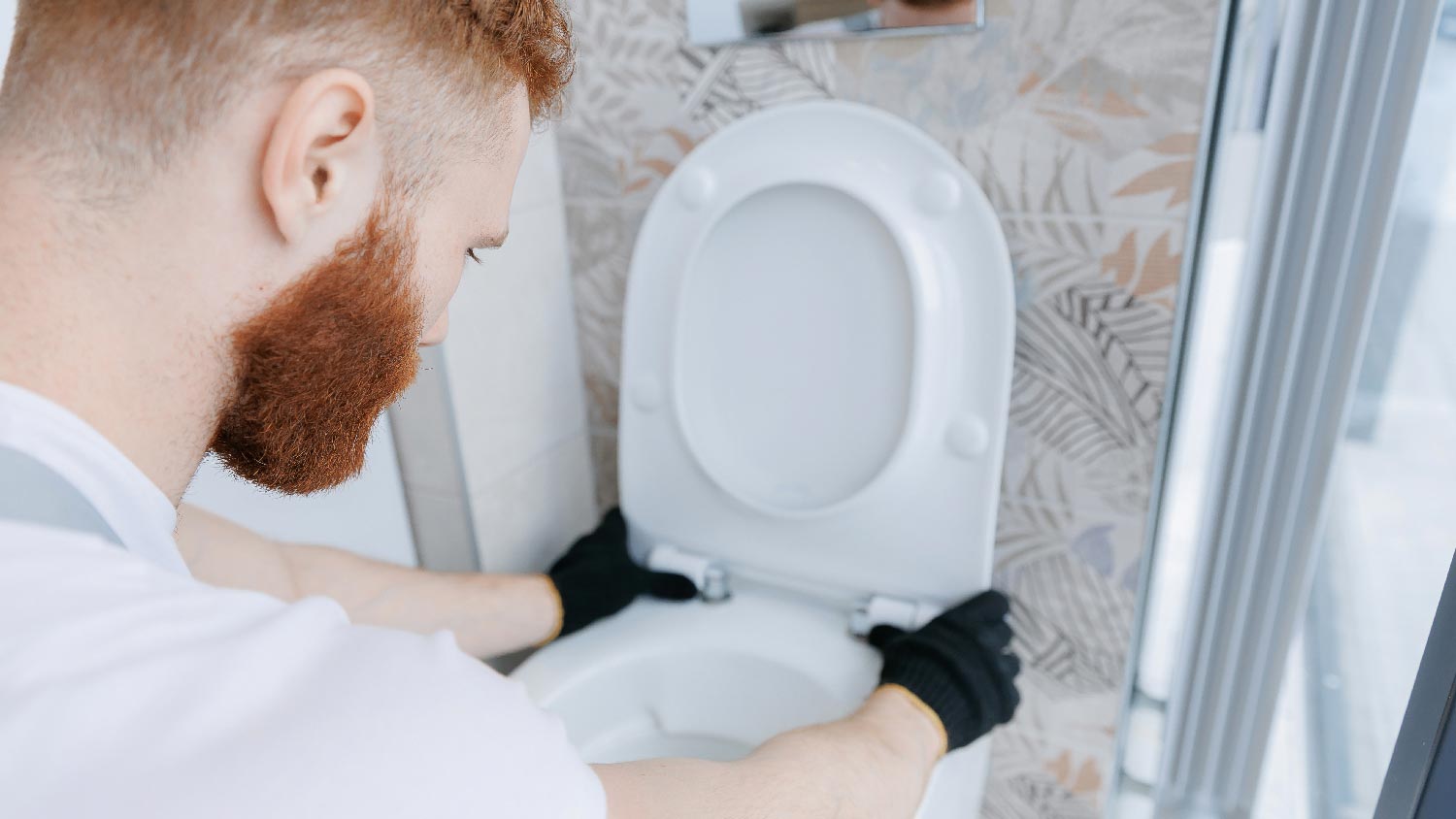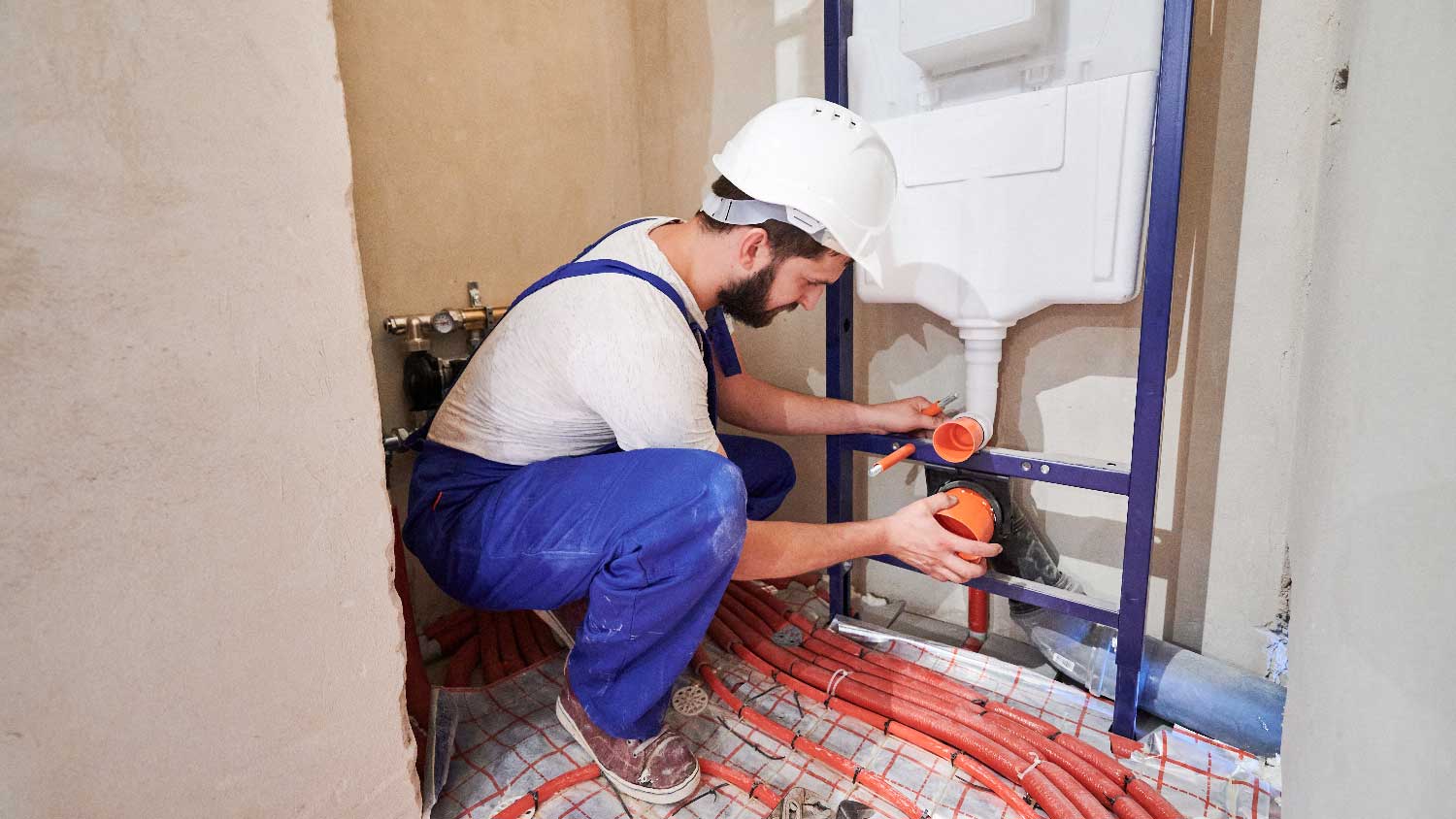
The cost to replace cast iron pipes depends on many factors, like size and accessibility. Use this guide to get a rough idea of how much you’ll spend.
Save space with these easy-to-clean toilets


Wall-hung toilets have a modern look compared to standard floor-mount models.
These wall-mounted models are easy to clean and can free up bathroom space.
Switching to a wall-hung toilet means spending more on the unit and installation.
If a bathroom remodel or toilet replacement is on the horizon, it’s time to start thinking about the type of toilet you want to install. Wall-hung toilets offer a modern alternative to standard toilets but require more labor to install and are more expensive. Before deciding, weigh the pros and cons of wall-hung toilet options.
When taking on this project, expect questions only a pro can answer. With our network of local pros, you'll get the job done and your questions answered—without the hassle and stress of doing it yourself.
Wall-hung toilets mount on the wall instead of on the floor like a standard toilet. Rather than a handle to flush the toilet, they have a flush plate mounted on the wall with a button to flush the toilet. These toilets offer a modern appearance and adjustable height, but they’re also difficult to install and more expensive than standard one- or two-piece toilets.
| Pros | Cons |
|---|---|
| Adjustable height | More expensive |
| Easier to clean | Difficult to install |
| Modern, streamlined appearance | Hard to access the tank |

Wall-hung toilets offer installation flexibility and a modern look. They’re also easier to clean (which never hurts!).
Because wall-hung toilets don’t rest on the floor, you can install them at any height. This is great for making home bathrooms more accessible to small children, taller adults, or people with disabilities.
Without an S-trap and tank, wall-hung toilets are much easier to clean than standard toilets. This also means they’re more sanitary, because there are fewer nooks and crannies for dirt and bacteria to hide in.
Wall-hung toilet plumbing is concealed behind the wall, so all you see is the streamlined bowl. These toilets hover above the ground and don't include a traditional tank, so the smaller toilet dimensions create a minimal appearance that can make the bathroom seem larger. The flush plate can be installed nearly flush on the wall, enhancing the modern look.
Wall-hung toilets save bathroom floor space because they rely on the wall rather than being installed on floor drains like other toilets. Traditional toilets need as much as 10 inches of floor space for installation, so wall-hung toilets can make even the smallest bathrooms feel bigger.

Wall-hung toilets also come with a few cons, mostly related to cost and installation.
Wall-hung toilets are more expensive to purchase and install than standard toilets. Standard two-piece toilets can cost as little as $100 but average around $375. Wall-hung toilets, on the other hand, cost $700 on average and can cost much more depending on the model.
If you decide to go with a wall-hung toilet, plan on getting your local toilet installation pro involved. Handy DIYers can often install standard toilets themselves, but learning how to install a wall-hung toilet requires more tools and know-how to create an opening in the wall and install the tank between the wall studs. If you’re replacing a standard model with a wall-hung model, you’ll also have to reroute the plumbing to move the drain lines, which is definitely not a job for an amateur.
To access the tank on a wall-mounted toilet, you have to remove the flush plate. This will give you access to the tank to check for leaks or adjust the flushing mechanism, but it’s not as easy as lifting the top of the tank off a standard toilet. If there are issues with leaks, fixing them can also be difficult and may require wall demolition depending on the severity, which can substantially increase toilet repair costs.
Most wall-mounted toilets have a recommended weight limit of 300 to 500 pounds. However, some models can accommodate up to 800 pounds. It’s also important that users sit down gently rather than drop down heavily onto the seat, as a sudden addition of weight can damage the toilet or loosen or pull it from the wall.
To avoid damage and ensure your wall-mounted toilet is safe to use, ensure it’s fitted well and installed correctly. Most wall-hung toilets have a mounting frame with heavy frame bolts that spread out the fixture’s weight and require a stud wall. However, manufacturer recommendations vary, so always follow the directions that come with your fixture.
Alternatives to wall-hung toilets include the following:
One-piece toilets: One-piece toilets include a fused bowl and tank. They’re sleek, modern, and easy to clean, but are more expensive and heavier than two-piece toilets.
Two-piece toilets: Two-piece toilets feature a separate bowl and tank that are bolted together into one fixture. They tend to be less expensive and more customizable but less durable and larger than one-piece toilets.
Bidet toilets: Bidets are a separate fixture, attachment, or part of all-in-one toilets. These units provide a cleansing spray mechanism that individuals can use to rinse off.
As for bidets—once clients try them, they rarely go back. They're more common than ever.
When the time comes to replace your toilet, considering whether a wall-hung toilet is right for you can help you make the best decision for your space and budget. If you want a bathroom with a modern aesthetic and want to spend less time cleaning the toilet, then a wall-hung model might be right for you. But you should also consider your budget and whether you’re up for a more extensive installation process.
From average costs to expert advice, get all the answers you need to get your job done.

The cost to replace cast iron pipes depends on many factors, like size and accessibility. Use this guide to get a rough idea of how much you’ll spend.

How much does hydro jetting cost? Learn hydro jet drain cleaning prices based on factors like the extent of the clog, accessibility, and more.

Plumbing inspection costs depend on the issue you’re looking into and the size of your home. Learn what you can expect to pay.

Understand how much water a toilet uses per flush and find ways to make your house more sustainable and efficient while lowering water bills.

Installing a new kitchen sink involves removing the old sink and putting in the new one. Follow these steps to learn how to install a kitchen sink like a pro.

We’ll show you how to keep pipes from freezing in the winter and how to thaw yours before they burst.